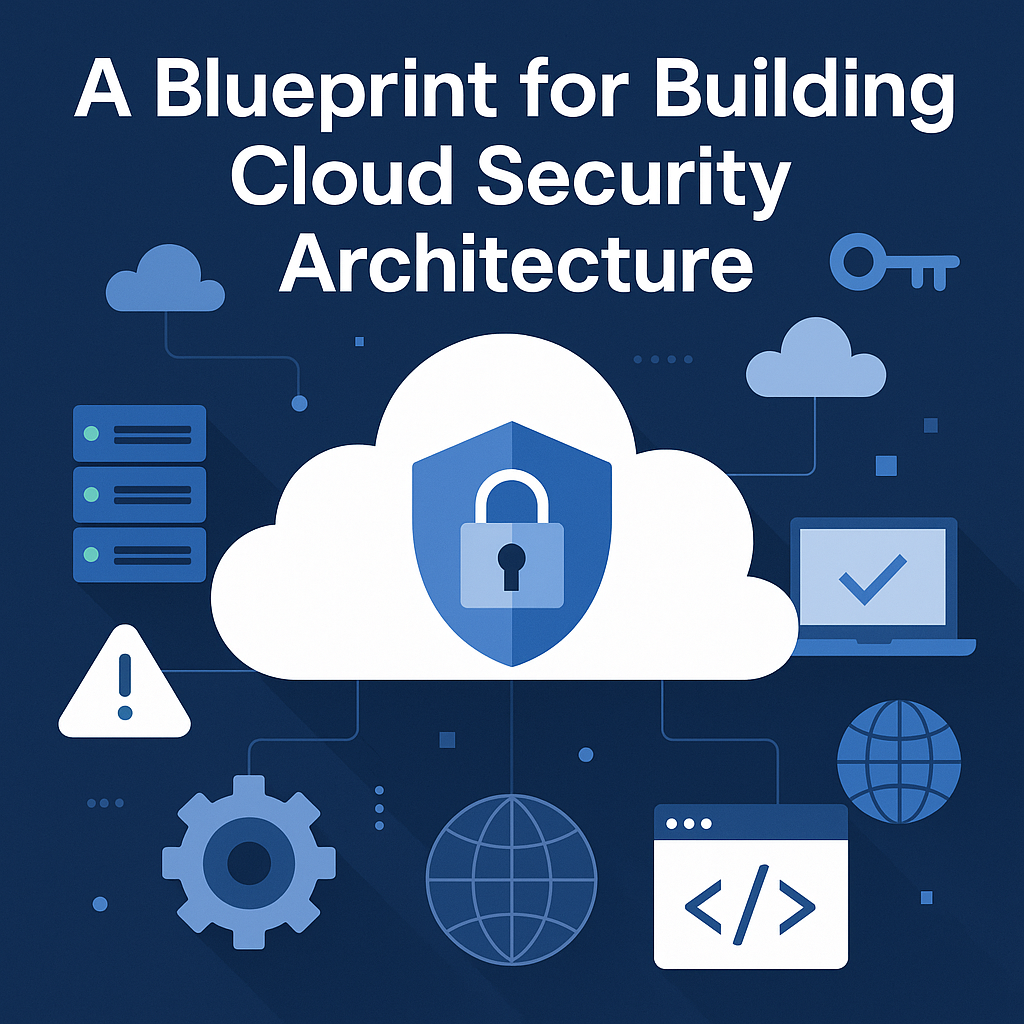A Blueprint for Cloud Security in the VDC Era: From Perimeter to Principles

The cloud is no longer just an infrastructure choice. It’s the digital nervous system of modern business. From AI workloads to virtualized operations, everything now flows through cloud environments. And yet, many organizations approach cloud security as if it’s just an extension of on-premise paradigms: VPNs, firewalls, policy controls.
But cloud security isn’t about securing locations. It’s about securing logic.
The Virtual Delivery Center (VDC) model takes this shift to its logical conclusion—executing delivery from the cloud, with the cloud, for the cloud. And that requires rethinking cloud security not as a patchwork of point tools, but as a living architecture. One that adapts, learns, and scales with the business.
This is your blueprint for building that architecture—principled, composable, automated, and ready for what’s next.
Most breaches in the cloud don’t stem from tool failure. They stem from architectural oversight.
A misconfigured bucket. Over-permissive roles. Unscanned IaC templates. These are not engineering mistakes—they are design failures.
As organizations shift from IaaS to PaaS to SaaS—and now to Virtual Delivery Centers—the attack surface mutates, multiplies, and becomes abstract. The security architecture must evolve from a network-centric model to a principle-centric architecture. This includes:
Decentralized identity and access (IAM)
Continuous configuration scanning
Real-time asset visibility across clouds
Security embedded in DevOps flows
The architecture is no longer around where your assets live. It’s around how they behave.
In cloud-native environments, traditional perimeter defenses are increasingly obsolete. Instead, security architecture must be layered across several functional pillars:
Cloud-Native Application Protection Platforms (CNAPP): End-to-end application security spanning development to production.
Security Service Edge (SSE): Secure access via SWG, CASB, and ZTNA.
SaaS Security Posture Management (SSPM): Visibility and misconfiguration detection across apps like Salesforce, M365, Slack, etc.
Infrastructure as Code (IaC) Security: Scan, fix, and enforce security policies before cloud resources are provisioned.
The VDC model amplifies the need for such architecture. When you execute software delivery, integration, or support remotely via cloud-powered teams, your security stack must natively support distributed work, ephemeral infrastructure, and modular pipelines.
Security tools do not deliver security. Security principles do.
Here are five principles every cloud security architecture must bake in:
1. Zero Trust Everywhere
Assume breach. Always verify. Limit blast radius. This is not optional in multicloud, VDC-based ecosystems.
2. Defense in Depth
Every layer—data, code, network, identity—must independently fail safe. Single points of failure cannot exist.
3. Least Privilege by Default
No more shared admin accounts. No more persistent tokens. Fine-grained, temporary, audited access only.
4. Automation Over Audits
Security controls must be machine-enforced—not human-enforced. If it’s not automated, it’s not secure.
5. Security as Code
Policy-as-code, compliance-as-code, and security-in-pipelines. Security must shift left—and stay left.
A Virtual Delivery Center thrives only if security is continuous, automated, and composable. These principles are the foundation.
In traditional IT, security teams protect networks. In the cloud, they protect intent.
A Virtual Delivery Center operates as a fully digital execution model—teams collaborating asynchronously, delivering software remotely, operating across regions and providers. This creates new needs:
Onboarding VDC engineers securely and instantly.
Restricting access to per-project, per-tenant data.
Enforcing GitOps policies for every IaC change.
Running vulnerability scans on cloud assets deployed by remote VDC teams.
Monitoring user behavior across distributed workstreams.
The old playbook doesn’t apply. VDCs need security that follows workloads, identities, and APIs—not infrastructure topology.
A strong cloud security architecture in the VDC era includes the following components:
IAM + RBAC: Identity-first security with fine-grained roles.
SASE Layer: For remote secure access by global VDC teams.
Secrets Management: Cloud-native, auditable, integrated with pipelines.
Monitoring & Logging: Unified observability for cloud assets, user actions, and workload behavior.
IaC Policy Enforcement: Terraform/CloudFormation scanning and auto-remediation.
Data Protection: Encryption in transit and at rest, backed by customer-managed keys (CMKs).
This isn’t just theory—it’s reference architecture for execution.
In the VDC operating model, code is deployed globally. Engineers collaborate asynchronously. Infrastructure is spun up and down every hour. In this world, security cannot be a downstream review—it must be upstream logic.
Key DevSecOps strategies:
Static analysis and secrets scanning in PRs.
SAST, DAST, and SCA pipelines embedded in every build.
IaC enforcement with policy-as-code (OPA, Sentinel, etc.).
Compliance drift detection in real-time (SOC 2, ISO 27001, HIPAA, etc.)
In short, DevSecOps shifts security from a gate to a generator—building it into every action of the VDC.
Cloud security is now a market of over 1,000 tools. The result? Vendor sprawl, context switching, alert fatigue, and broken handoffs.
Your architecture must:
Consolidate tooling around platforms (e.g., CNAPPs, SSE)
Rely more on cloud-native controls than third-party overlays
Use unified dashboards for telemetry, not siloed point solutions
Automate remediation, not just detection
Virtual Delivery Centers especially suffer when security tools don’t talk to each other. The blueprint must reduce complexity—not shift it to engineering.
Architecture is only as good as the humans who design, operate, and evolve it.
Security in the VDC era requires:
Training engineers to “think secure” in code and infra design.
Equipping product managers with compliance awareness.
Automating repetitive security work to reduce burnout.
Fostering a blameless postmortem culture for breaches or CVEs.
Above all, it requires trust—not just in tools, but in the VDC contributors building secure systems without silos or finger-pointing.
Looking ahead, cloud security architecture will need to support:
AI-native workloads: Secure agent orchestration, LLM input validation, and prompt injection defenses.
Federated cloud operations: Seamless policy enforcement across sovereign cloud regions.
Edge-first VDCs: Zero trust for remote edge nodes running on low-latency apps (e.g., logistics, manufacturing).
The blueprint you build today must flex for these futures.
Cloud security is no longer optional. It is foundational. And it is architectural.
The Virtual Delivery Center model doesn’t just change how we deliver—it changes what security must enable: speed, autonomy, trust, and global scale.
A strong security blueprint ensures:
Developers ship fast without fear.
Clients engage knowing their data is protected.
Businesses scale without introducing new attack surfaces.
Regulators see compliance baked into every layer.
Don’t bolt security on. Architect it in.

By redesigning packaging, exploring reusable models, investing in smart tracking, and leveraging the VDC model for execution, beverage manufacturers can reduce their environmental footprint while boosting their brand relevance and operational resilience.